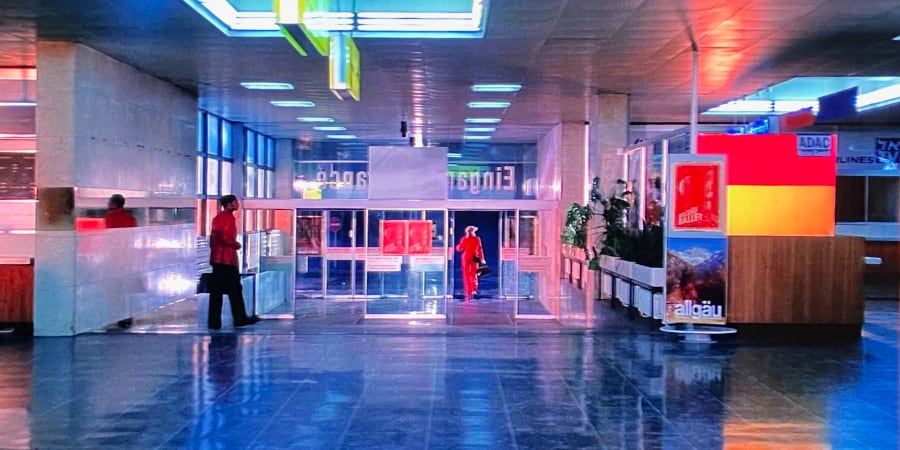
Suspiria
Director: Dario Argento
Release year: 1977
Suspiria is a vivid, colourful dream where death stalks us, out of sight but ever-present. Characters die in complicated and fantastical ways to Goblin’s driving mix of Moog synths, bells, whispered vocals and a drum beat for the ages. And it’s a film filled with strong women. The men are all ineffectual side characters.
Suzy Bannion, an American dance student, arrives on a stormy night at the Tanz Academy in Freiberg, Germany. Initially turned away, she passes a woman fleeing the building who ends up elaborately and gruesomely murdered. Suzy’s attempts to be independent at the Academy don’t last long, and she is quickly sucked into the sinister baroque world of a coven of witches.
The Goblin soundtrack is lauded as one of the greatest of any horror film, and it injects itself aggressively into the story, not just complementing it but as a multiplier, lifting the experience to giddy heights. Argento wanted to do something radical after the murder mysteries he’d become known for. The human killers from previous films are replaced with supernatural ones, and Argento’s artistic ambitions are given full rein, using architecture, lighting, music, camera lenses — whatever he could find to fulfil his vision. It’s completely captivating.
The characters are enjoyably odd, but Alida Valli is sensational as the amusingly-named Miss Tanner, the strict dance instructor who drives the ballet students on, barking orders with sadistic glee. Valli was the luminous Anna Schmidt in The Third Man, and also Louise, the complicit assistant to Dr. Génessier, in Georges Franju’s Eyes Without a Face. It’s a fun reminder of the variety of roles actors can find themselves taking, for many different reasons, over long careers.